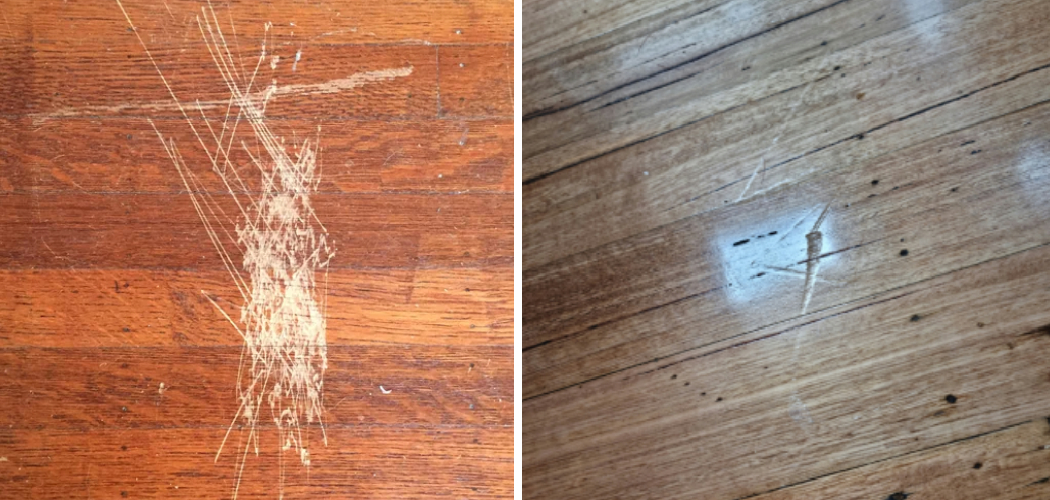Are you dealing with scuff marks on your beautiful engineered wood floors? Don’t worry, we have the perfect solution! Removing scuff marks from engineered wood floors may seem daunting but with the right approach, it doesn’t have to be.
In this blog post on how to remove scuff marks from engineered wood floors, we’ll provide detailed instructions on how to easily remove scuff marks and restore your flooring to its original state. So stick around and get ready to find out how can you easily get rid of those annoying blemishes in an efficient manner.
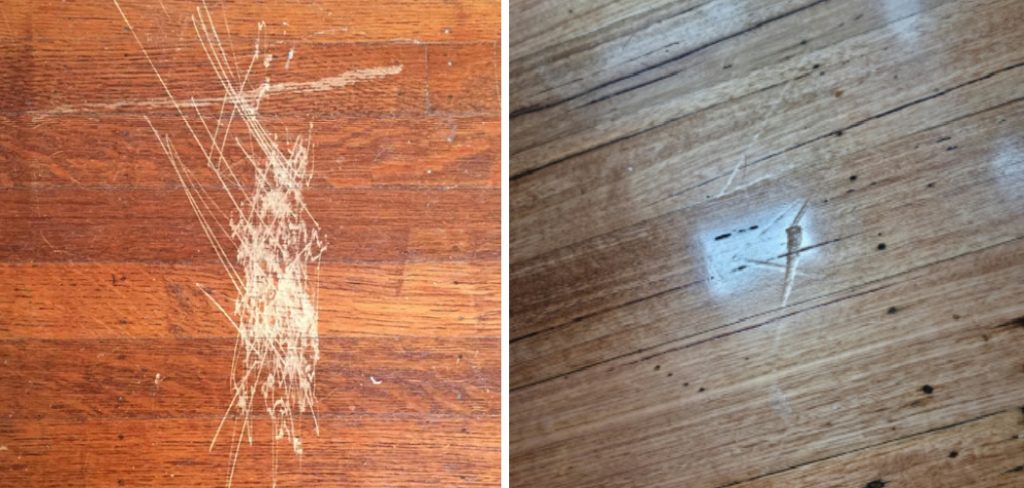
Needed Materials
Given that engineered wood floors are more delicate than other types of flooring, it’s important to gather the right materials before attempting to remove scuff marks. Here’s what you’ll need:
- Microfiber Cloth
- Baking Soda
- White Vinegar
- Warm Water
- Soft-bristled Brush
11 Step-by-step Guidelines on How to Remove Scuff Marks From Engineered Wood Floors
Step 1: Prepare the Area
Start by removing any furniture or objects from the area with scuff marks to avoid damaging them. if the marks are on a high-traffic area, consider placing rugs or carpets to protect your floors.
It’s also important to vacuum or sweep the area to remove any dirt or debris that may interfere with the cleaning process. You can also use a mild wood cleaner to clean the area before proceeding.
Step 2: Create a Cleaning Solution
Mix equal parts of white vinegar and warm water in a spray bottle. This cleaning solution is gentle enough not to damage your engineered wood floors while being effective at removing scuff marks. Alternatively, you can also mix baking soda and water until it forms a paste.
Step 3: Spray the Cleaning Solution
Spray the cleaning solution onto the scuff marks and let it sit for a few minutes. This will allow the solution to penetrate and loosen up the scuff marks, making them easier to remove.
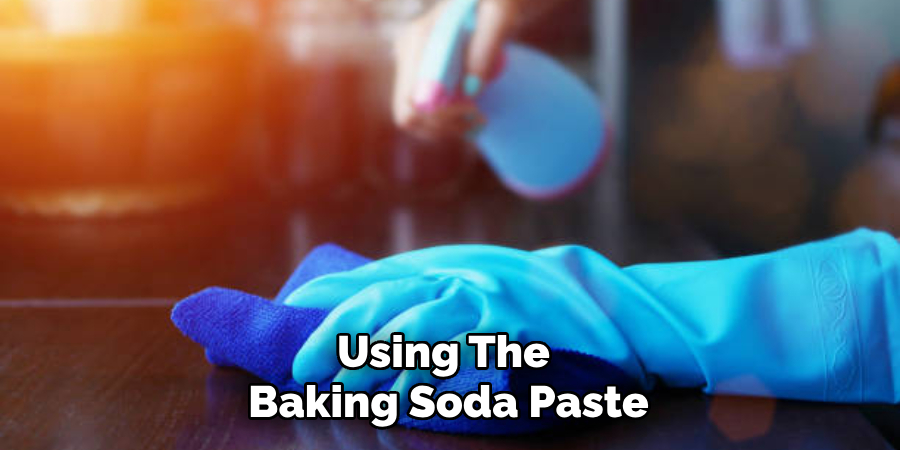
If you’re using the baking soda paste, apply it directly to the scuff marks. Otherwise, use a soft-bristled brush to spread the paste over the marks. However, avoid using excessive force to prevent scratches on the floor.
Step 4: Gently Scrub the Scuff Marks
Using a soft-bristled brush or a microfiber cloth, gently scrub the scuff marks in a back-and-forth motion. Be careful not to scrub too hard as this can damage your engineered wood floors. It’s important to be patient and let the cleaning solution or paste do its job. You can also spray more of the cleaning solution if necessary.
Step 5: Wipe Away the Residue
Using a clean microfiber cloth, wipe away any residue left from the scuff marks. If you’re using the baking soda paste, make sure to rinse it off thoroughly with warm water before wiping it dry.
It’s important to avoid leaving any excess moisture on your floors as it can cause damage. It’s also recommended to test out any cleaning solutions on a small, inconspicuous area first to ensure they don’t cause any discoloration.
Step 6: Repeat if Necessary
If the scuff marks are still visible, you can repeat the process until they are completely removed. However, if the marks are stubborn and refuse to come off with gentle scrubbing, it’s best to seek professional help to avoid damaging your floors.
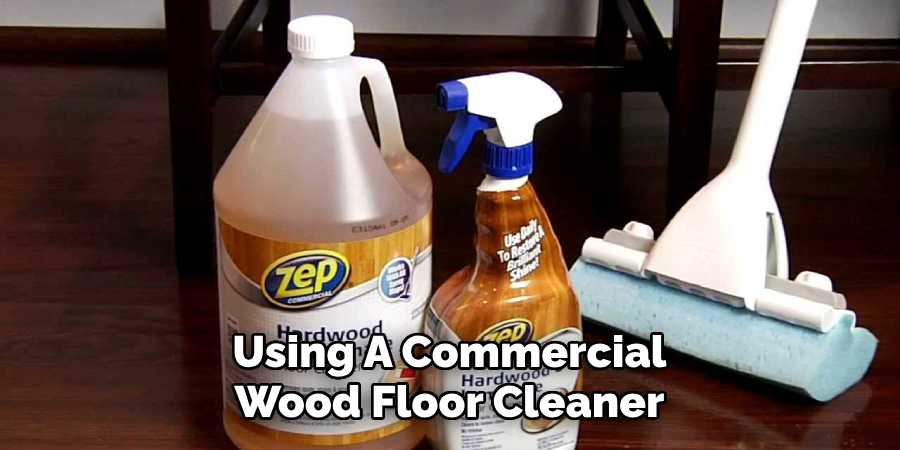
You can also try using a commercial wood floor cleaner specifically designed for engineered wood floors. It’s important to always follow the instructions on the cleaner and test it on a small area first.
Step 7: Rinse the Area
Once all the scuff marks are removed, rinse the area with warm water and dry it thoroughly with a clean cloth. Avoid leaving any standing water on your floors as this can cause damage.
But don’t worry, engineered wood floors are water-resistant and can withstand mild amounts of moisture. You should also avoid using excessive amounts of water during the cleaning process. It’s always better to be safe than sorry!
Step 8: Apply Furniture Pads
To prevent future scuff marks, consider placing furniture pad protectors under the legs of your furniture. This will help distribute the weight and prevent scratches on your floors.
You can find these pads at most hardware or home improvement stores. It’s also a good idea to regularly check these pads for wear and tear and replace them if necessary. But don’t worry, these pads are inexpensive and easy to replace.
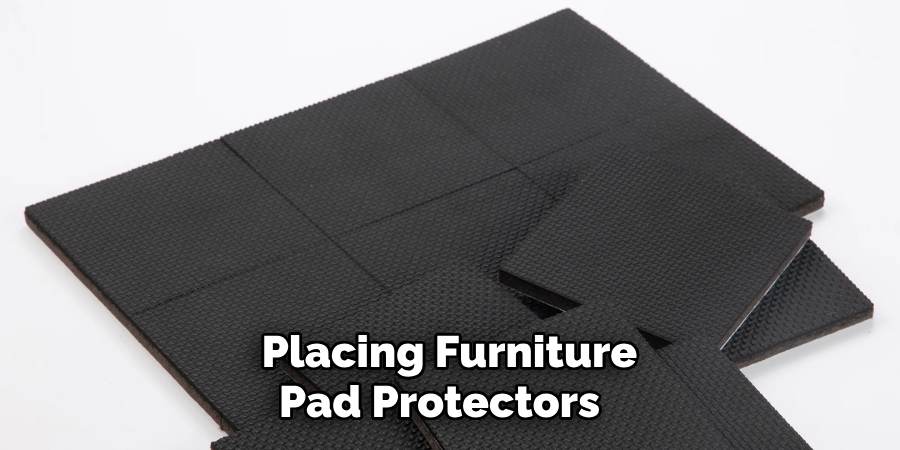
Step 9: Use Protective Mats
If possible, place protective mats in high-traffic areas of your engineered wood floors to avoid scuff marks from occurring. These mats can also help trap dirt and debris that may cause scratches or damage to your floors.
Just make sure to regularly clean and shake out the mats to prevent any build-up of dirt and debris. Otherwise, they may become counterproductive and cause more damage than good. It’s recommended to use mats made specifically for hardwood or engineered wood floors.
Step 10: Maintain Your Floors
Regularly cleaning and maintaining your engineered wood floors can help prevent scuff marks from occurring in the first place. Be sure to sweep or vacuum your floors regularly and use a mild wood cleaner when needed.
You should also avoid using harsh chemicals or abrasive tools on your floors as they can cause damage. It’s also a good idea to periodically check for any scuff marks and address them immediately to prevent them from becoming more difficult to remove.
Step 11: Enjoy Your Beautiful Floors
With these simple steps, you should now have a clean and restored engineered wood floor free of scuff marks! Regular maintenance and preventative measures can help keep your floors looking beautiful and scuff-free for years to come. Remember to always be gentle with your floors and use the right materials for cleaning to avoid causing any damage.
Now, you can sit back, relax, and enjoy your stunning engineered wood floors without worrying about pesky scuff marks! So next time, if someone asks you how to remove scuff marks from engineered wood floors, you’ll know exactly what to do. Happy cleaning! And remember, a little bit of effort can go a long way in maintaining the beauty and longevity of your engineered wood floors.
Things to Consider
- Regularly Clean and Maintain Your Floors to Prevent Scuff Marks
- Use Gentle Cleaning Solutions and Avoid Harsh Chemicals or Abrasive Tools
- Test Any New Cleaning Solutions on a Small, Inconspicuous Area First
- Use Furniture Pads and Protective Mats to Prevent Future Scuff Marks
- Replace Worn-out Furniture Pads Regularly
- Avoid Using Excessive Amounts of Water During the Cleaning Process
- Use Mats Specifically Designed for Hardwood or Engineered Wood Floors
- Be Patient and Avoid Scrubbing Too Hard to Prevent Damage to Your Floors. Enjoy Your Beautiful, Scuff-free Floors! Happy Cleaning!
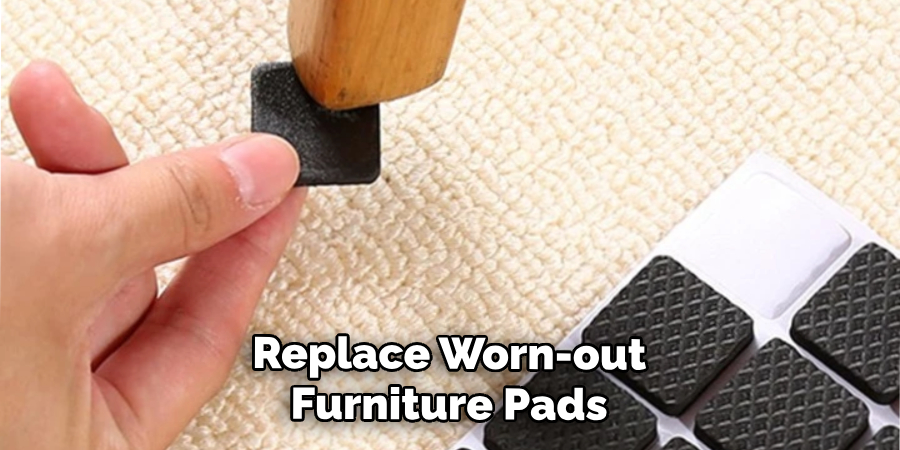
Frequently Asked Questions
Q1: Can I Use This Method to Remove Scuff Marks on Other Types of Wood Floors?
A1: While this method is specifically designed for engineered wood floors, it can also be used for other types of sealed wood flooring. However, it’s always best to test out any cleaning solution on a small area first to ensure it doesn’t cause damage or discoloration. It’s also important to follow the care and maintenance instructions for your specific type of wood flooring.
Q2: Is it Safe to Use Baking Soda on My Engineered Wood Floors?
A2: Yes, baking soda is a safe and effective cleaning agent for engineered wood floors. It is non-toxic and will not cause any damage when used correctly. However, it’s important to avoid leaving any excess moisture on your floors when using baking soda or any other cleaning solution. Make sure to rinse and dry the area thoroughly after using it.
Q3: Can I Use Vinegar as a Cleaning Solution for Scuff Marks?
A3: While vinegar can be used as a natural cleaner for many household tasks, it’s not recommended for cleaning scuff marks on engineered wood floors. Vinegar is an acid and can potentially damage the sealant on your floors, causing discoloration or even warping. It’s best to use a mild wood cleaner or baking soda paste to remove scuff marks.
Q4: What if My Scuff Marks Are Too Stubborn to Remove?
A4: If the scuff marks are not coming off with gentle scrubbing, it’s best to seek professional help. Attempting to use harsher methods or tools may cause damage to your floors and end up costing more in repairs. It’s always worth consulting a professional if you’re unsure about removing scuff marks on your engineered wood floors. So don’t be afraid to ask for help!
Conclusion
In conclusion on how to remove scuff marks from engineered wood floors, engineered wood floors may require a bit more intricate care than hardwood floors due to their softer nature.
Removing scratch marks from engineered wood floors is not an impossible feat though; all you need is the right cleaning materials and techniques to be able to get rid of the pesky blemishes. With the help of a few simple steps such as using maroon pads to buff it out or applying a paste wax concealer, your engineered wood floors can look good as new in no time.
We hope these tips and tricks for removing scuff marks from engineered wood floors will come in handy when you are cleaning up your own! For more helpful tips and expert advice on caring for different types of flooring, feel free to contact us today – we would love to help you ensure that your home looks its best!
